Disclosure: This article contains affiliate links. We may earn a commission from purchases at no extra cost to you, which helps our travel content.
The first time I landed at Jomo Kenyatta International Airport, the cacophony of honking matatus and the vibrant street energy hit me with the same intensity as mile 20 of a marathon – overwhelming yet exhilarating. I'd come to Kenya to coordinate a clean water initiative with our relief organization, but quickly realized that mastering Nairobi's transportation system would be my first challenge. Like the rhythm section in an Afrobeat record, Nairobi's traffic has its own pulsing tempo – sometimes flowing smoothly, often chaotic, but always with an underlying pattern once you know how to listen for it. Whether you're here to volunteer, explore, or perhaps even join the famous Nairobi Marathon (which completely transformed my understanding of running at altitude), this guide will help you navigate Kenya's bustling capital without blowing your budget or missing the city's authentic heartbeat that exists far from the safari tourism brochures.
From Airport to City: Your First Nairobi Transit Decision
After collecting your bags at JKIA, you'll face your first transportation choice – one that sets the tone for your entire Nairobi experience. The airport sits about 15km southeast of the city center, and your options range from convenient but pricier to adventurous but budget-friendly.
The most straightforward option is using a rideshare app like Uber or Bolt. During my first visit, I was grateful for the portable charger I'd stashed in my carry-on, which kept my phone alive after the long flight so I could book my ride. Expect to pay around 1000-1500 KSh ($10-15) to most city center locations – a bargain compared to North American prices for similar distances.
Airport taxis are another option, but they typically charge 2000-2500 KSh. If you go this route, always confirm the price before getting in and ensure the driver uses the meter or agrees to a fixed price.
For the budget-conscious traveler willing to embrace a bit of adventure, there's the Airport Bus Service (Route 34) that costs just 80 KSh. During my second visit, I opted for this local experience, which drops you at the Railway Station downtown. Fair warning though – if you're arriving with marathon-sized luggage, this might not be your best bet as space is limited and the buses can get crowded.
Whichever option you choose, factor in Nairobi's legendary traffic. What might be a 20-minute journey at 5 AM could easily become a 90-minute crawl during rush hour. Like pacing a long run, sometimes the key to Nairobi transport is knowing when to push and when to hold back.
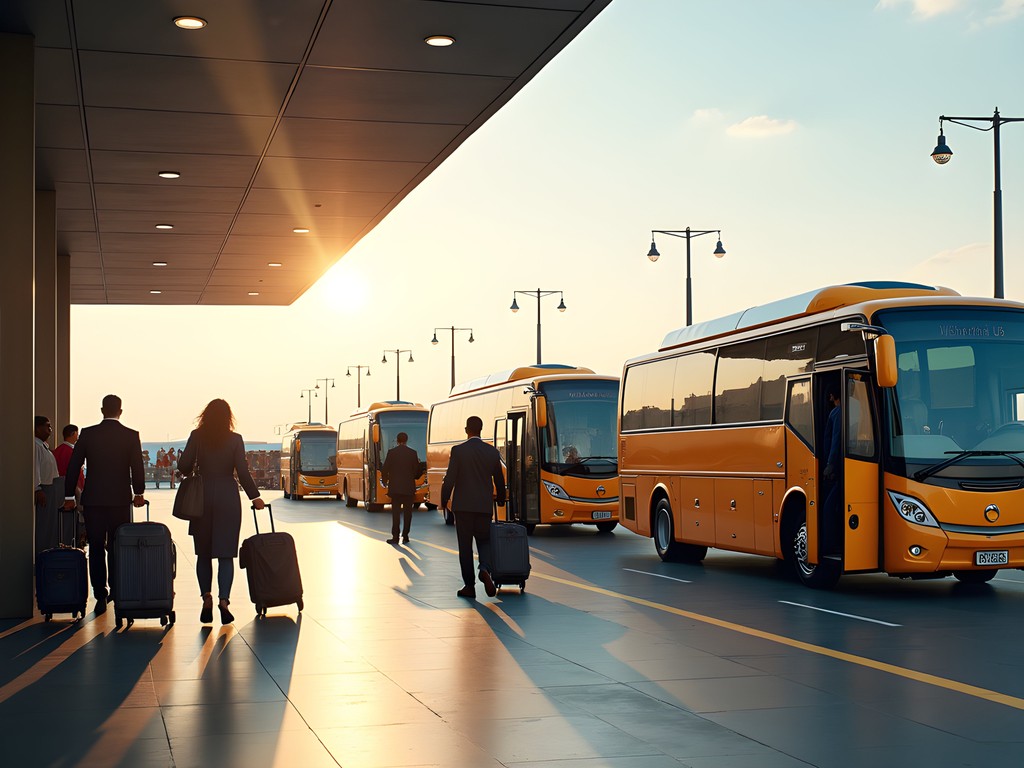
💡 Pro Tips
- Download both Uber and Bolt apps before arriving – they often have different wait times and pricing
- Keep small denominations of Kenyan shillings for bus fare and tips
- The airport has free WiFi, but it can be spotty – having a local SIM card ready is ideal
Mastering the Matatu: Nairobi's Iconic Minibuses
Nothing represents Nairobi's transportation culture quite like the matatu – colorfully decorated minibuses that serve as the city's primary public transit system. These vibrant vehicles, often adorned with graffiti-style art of music icons and pulsing with Kenyan beats, remind me of the independent record shops I seek out in every city I visit – they're cultural artifacts as much as they are functional services.
My first matatu experience came during my second day in Nairobi when a local volunteer insisted I couldn't truly understand the city without riding one. He was right. For 30-80 KSh (depending on distance), matatus offer not just transportation but a window into Nairobi's soul.
Navigating the system requires some insider knowledge. Matatus operate on numbered routes throughout the city, with major terminals at the Railway Station, Kencom, and Archives in the Central Business District. Unlike the organized transit maps I'm used to in Toronto, there's no official matatu route map. Instead, look for the number displayed on the front of the vehicle and ask the conductor (known as a makanga) where they're headed.
During rush hour, matatus transform into tightly-packed moving meditation chambers – though perhaps not the peaceful kind I experienced with monks in Thailand! You'll be shoulder-to-shoulder with locals heading to work, school, or home. It's intimate, sometimes chaotic, but always authentic.
For first-timers, I recommend downloading the Digital Matatus app which offers route information for Nairobi's complex matatu network. It's been my navigation lifeline during volunteer coordination trips across the city. Start with shorter journeys during daylight hours until you get comfortable with the system. And always keep your belongings secure – just as you would on public transportation in any major city.
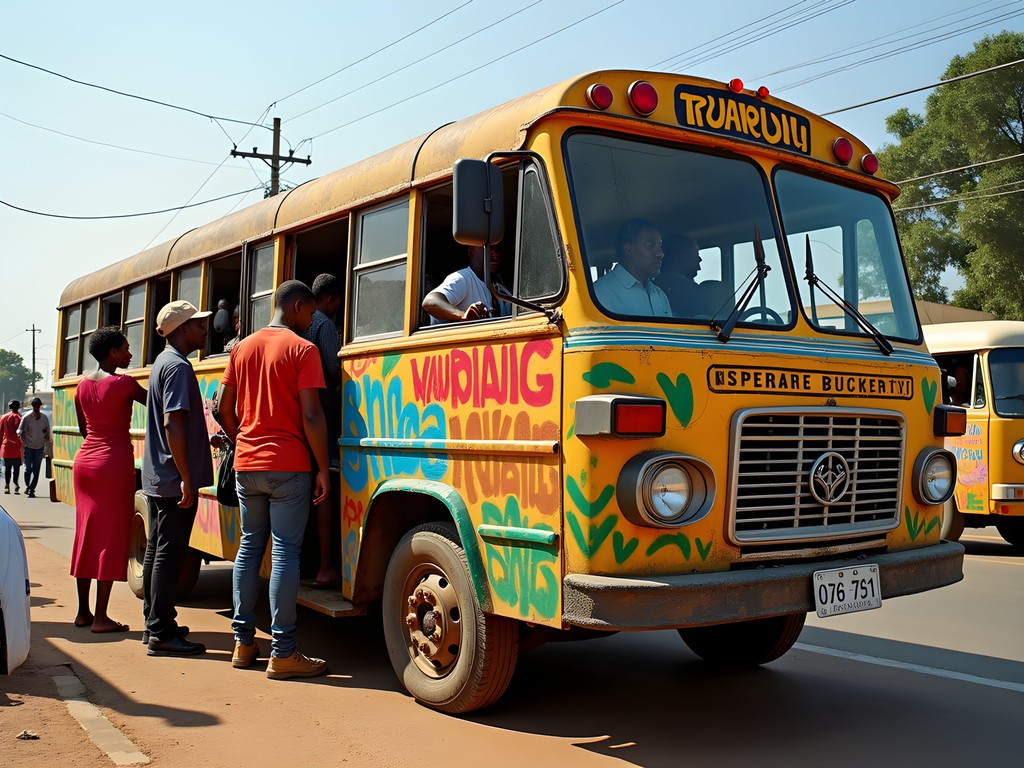
💡 Pro Tips
- Have exact change ready – conductors rarely have change for large bills
- Board matatus at designated stages (stops) rather than random roadside points
- If you're unsure about your destination, tell the conductor where you're going before boarding
Rideshare Apps: Finding Balance Between Budget and Convenience
When my legs are spent after a long training run through Karura Forest or I'm carrying supplies for our community water project, I turn to rideshare apps – the middle ground in Nairobi's transportation ecosystem. Uber and Bolt (formerly Taxify) have transformed getting around the city, offering a welcome compromise between the adventure of matatus and the expense of traditional taxis.
The base fare for most rides within central Nairobi ranges from 200-600 KSh ($2-6), making it significantly more affordable than similar services in North America or Europe. During my three-week stay coordinating volunteers last year, I spent less on a month of daily Ubers than I would in a week back home.
Both platforms offer various vehicle options. UberX and Bolt's standard service are your budget-friendly choices. For slightly more comfort, UberSelect provides newer vehicles. If you're traveling with a group from your hostel or need space for shopping bags from the markets, UberXL and Bolt XL accommodate up to six passengers.
One Nairobi rideshare quirk: drivers may call to confirm your pickup location even when the app shows they've found you. The translation app on my phone has saved me countless times when my Swahili skills reached their limit during these conversations. A few basic Swahili phrases go a long way, though most drivers speak English.
Safety-wise, rideshare services offer peace of mind through driver ratings and trip tracking. As a solo traveler, I particularly appreciate being able to share my journey status with friends or fellow volunteers. That said, always verify the license plate matches before getting in, and sit in the back seat – standard rideshare safety practices that apply worldwide.
Pro tip: Nairobi traffic can be unpredictable. What shows as a 15-minute ride might take 45 minutes during rush hour. Build buffer time into your schedule, especially for important meetings or airport departures. The city's flow has taught me the same patience required at mile 22 of a marathon – sometimes you just have to embrace the journey rather than fixate on the destination.
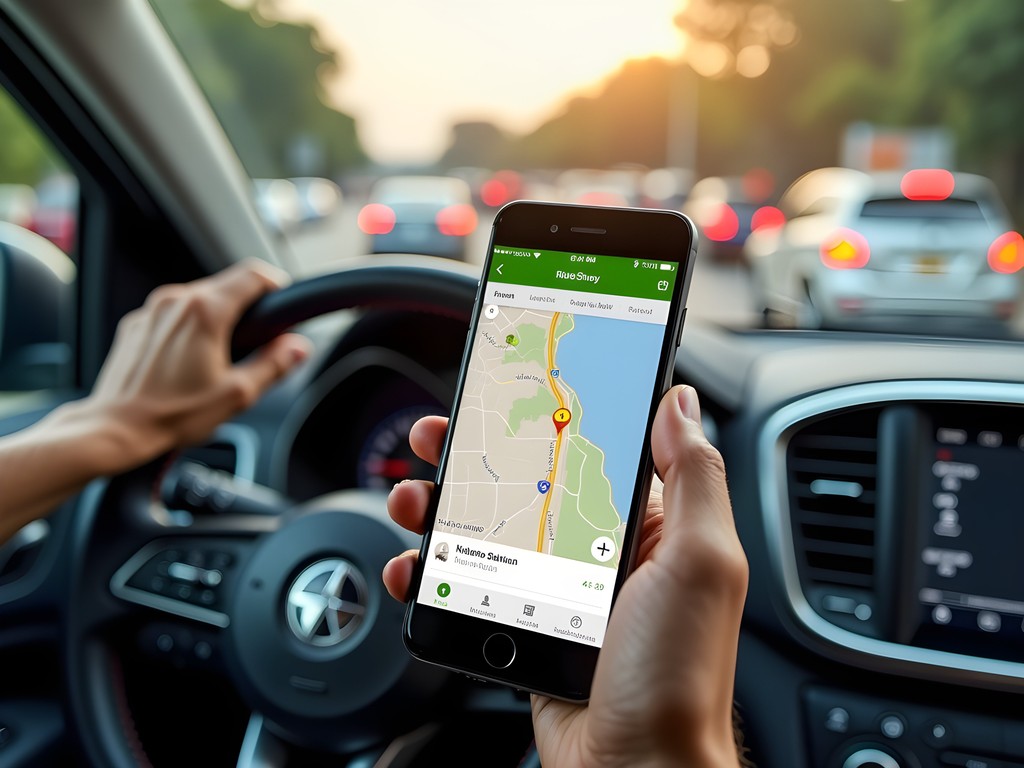
💡 Pro Tips
- Compare prices between Uber and Bolt before booking – one is often running promotions
- Schedule rides in advance for early morning airport departures
- Save your accommodation as a favorite location to make returns easier, especially if the address is difficult to explain
Walking Nairobi: When, Where and How to Explore on Foot
As a marathon runner, exploring cities on foot is my preferred way to absorb their rhythm and energy. Nairobi offers plenty of walkable areas, though it requires more awareness than my usual training routes along Toronto's waterfront.
The Central Business District (CBD) is generally safe for daytime walking, with wide sidewalks and a grid layout that makes navigation straightforward. I've spent hours wandering between the Kenyatta International Convention Centre and Jamia Mosque, discovering hidden record stores stocking East African vinyl treasures and small cafés serving Kenyan coffee that fuels my runs better than any energy gel.
Westlands and Kilimani are also pedestrian-friendly neighborhoods with tree-lined streets and plenty of restaurants and shops. Walking these areas gives you a sense of Nairobi's rapid development and cosmopolitan character that you'd miss from inside a vehicle.
For nature walks within the city, Uhuru Park and Karura Forest offer green respites from urban intensity. My trail running shoes have logged countless miles on Karura's dirt paths – the same shoes that carried me through monastery trails in Thailand now collecting the red Kenyan soil in their treads.
However, walking requires common-sense precautions. I avoid walking after dark, particularly in unfamiliar areas. Keep valuables concealed – my running belt tucked under my shirt holds just the essentials: a minimal amount of cash, a copy of my ID, and my phone. Leave the passport and extra credit cards locked safely at your accommodation.
Nairobi's elevation (about 5,450 feet above sea level) means the sun is intense despite the moderate temperatures. Hydration is crucial – I carry water everywhere, just as I would during marathon training. The city's hills also provide unexpected workouts; the incline from the CBD to Upper Hill would make a decent interval training session!
Walking connects you to a city's heartbeat in ways other transportation can't. You'll notice the street art, smell the nyama choma (grilled meat) from roadside vendors, and perhaps exchange greetings with locals – moments of connection that become the true souvenirs of travel.
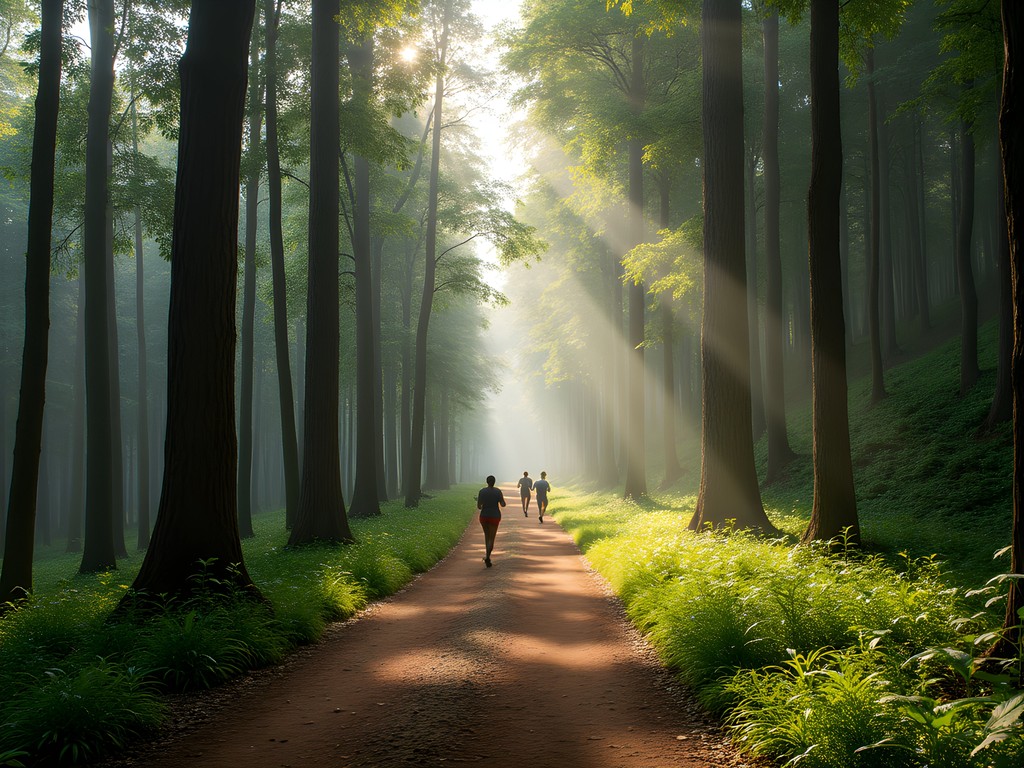
💡 Pro Tips
- Walk with purpose and confidence, especially in busy areas
- Use Maps.me or Google Maps offline functionality to navigate without using data
- Carry a small amount of cash for street food or impromptu purchases, but keep larger sums secure
Day Trips: Getting Beyond Nairobi's City Limits
While Nairobi itself offers plenty to explore, some of Kenya's most transformative experiences lie just beyond the city limits. During my volunteer stints, I've made it a tradition to spend weekends exploring these nearby treasures, and figuring out how to reach them has become something of a specialty.
Nairobi National Park sits just 7km from the city center – perhaps the only wildlife reserve in the world where you can photograph giraffes against a backdrop of skyscrapers. The easiest access is via Uber or taxi, costing around 1000 KSh each way. For budget travelers, matatu route #125/126 from Railway Station gets you to the gate for under 100 KSh, though you'll need to walk the final stretch.
The Ngong Hills, about 22km southwest of Nairobi, offer spectacular hiking and views that have reset my perspective during stressful project weeks. Matatus to Ngong Town run from the CBD (150 KSh), and from there, you can take a bodaboda (motorcycle taxi) to the hills' entrance. Alternatively, a direct Uber costs approximately 1500-2000 KSh.
For a cultural day trip, Kiambethu Tea Farm in Limuru provides tours of its colonial-era plantation with traditional lunch included. It's about an hour's drive northwest of Nairobi. While they offer shuttle service from select hotels (3000 KSh round trip), budget travelers can catch a matatu to Limuru town (200 KSh) and negotiate with local bodaboda drivers for the final leg.
My most memorable day trip combined transportation methods in true Kenyan fashion. To reach the elephant orphanage at David Sheldrick Wildlife Trust, I took an Uber to avoid missing the limited public viewing hours, but returned via a combination of walking and a matatu after spending time with the baby elephants – whose determined spirit reminded me of marathon finishers pushing through the final miles.
For these excursions, my day pack has been essential – large enough for water, snacks, and a light jacket for Nairobi's temperature swings, but compact enough to keep my hands free for photography or impromptu trail runs when inspiration strikes.

💡 Pro Tips
- For national parks and reserves, arrive early morning or late afternoon for the best wildlife viewing
- Combine transportation methods to balance cost and convenience – perhaps splurge on a direct ride there but take public transport back
- Always bring more water than you think you'll need for day trips outside the city
Safety and Cultural Considerations When Getting Around
Navigating transportation in any unfamiliar city requires awareness, but in Nairobi, it's particularly important to balance adventure with caution. After multiple extended stays coordinating volunteer projects, I've developed a sixth sense for moving safely through the city – similar to the heightened awareness I maintain during predawn training runs.
First, the practical safety aspects: avoid displaying valuables while using public transportation or walking. My approach is minimalist – I carry only what I need for the day in a nondescript bag. When I need my camera for documenting project sites or the occasional record shop discovery, I use a anti-theft crossbody bag that keeps equipment secure without screaming 'tourist.'
Nairobi has areas with higher crime rates, particularly after dark. Avoid walking through Mathare, Kibera, and parts of Eastleigh at night. Even in safer areas like Westlands or Kilimani, use rideshare apps rather than walking alone after sunset. Trust your instincts – if something feels off about a particular matatu or taxi situation, wait for the next one.
Beyond physical safety, understanding cultural nuances enhances your transportation experience. Matatus operate on what locals call 'Kenyan time' – schedules are fluid, and patience is essential. When boarding, greet fellow passengers with a simple 'Jambo' (hello) – small courtesies go a long way.
For women travelers, be aware that matatus can sometimes be crowded spaces where personal space is limited. Sitting near other women or families can provide more comfort. Most Kenyans are friendly and helpful, but maintaining appropriate boundaries is wise in any major city.
Language rarely presents major barriers as English is widely spoken, especially among younger Kenyans and transportation workers in tourist areas. However, learning basic Swahili phrases demonstrates respect and often results in warmer interactions. 'Asante' (thank you), 'tafadhali' (please), and 'bei gani?' (how much?) have served me well on countless journeys.
Finally, embrace the spiritual lesson I learned from monastery visits across Asia – transportation, like life, rarely follows a perfect schedule. Kenyan transportation has taught me patience and presence in ways that complement my marathon training philosophy: control what you can, adapt to what you can't, and find joy in the journey itself.

💡 Pro Tips
- Trust your instincts – if a transportation situation feels unsafe, find an alternative
- Keep emergency contacts saved offline and share your location with someone when using unfamiliar routes
- Respect local customs like giving up seats to elders on public transportation
Final Thoughts
As I lace up my running shoes for one final morning jog around Uhuru Park before flying back to Toronto, I'm reminded that transportation in Nairobi – like marathon running – is about finding your rhythm within chaos. The matatus have taught me adaptability, the walking paths have revealed hidden stories, and even the traffic jams have offered lessons in patience that I'll carry back to my volunteer coordination work. Nairobi doesn't just connect you to destinations; it connects you to a vibrant pulse that stays with you long after you've left. Whether you're navigating your first matatu ride or watching giraffes against the city skyline, approach Nairobi's transportation as an integral part of your journey rather than just the means to an end. Move mindfully, connect authentically, and remember that sometimes the most meaningful discoveries happen between destinations. Hata matatu inakupeleka mbali – even a matatu takes you far.
✨ Key Takeaways
- Download rideshare apps before arriving for easier airport transfers
- Matatus offer the most authentic and budget-friendly way to experience Nairobi
- Walking is viable in many neighborhoods during daylight hours but requires awareness
- Combining transportation methods often provides the best balance of experience, cost and convenience
📋 Practical Information
Best Time to Visit
year-round, though April-June and October-November have more rainfall
Budget Estimate
$30-50/day for transportation and basic accommodations
Recommended Duration
5-7 days
Difficulty Level
Moderate
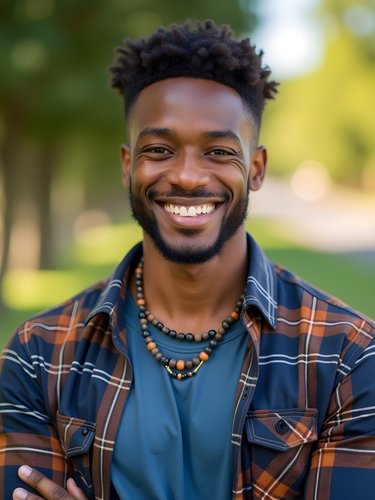
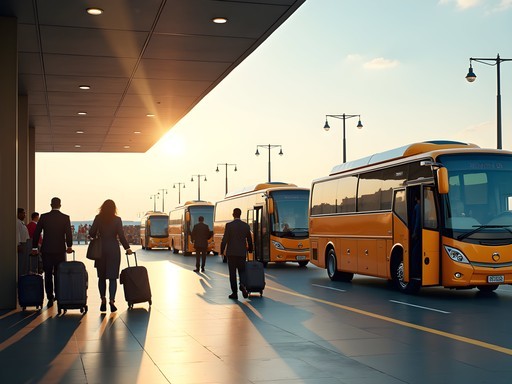







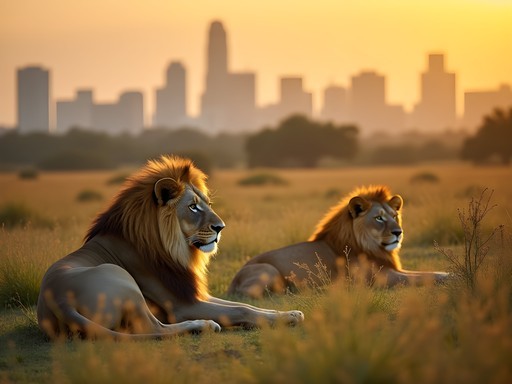
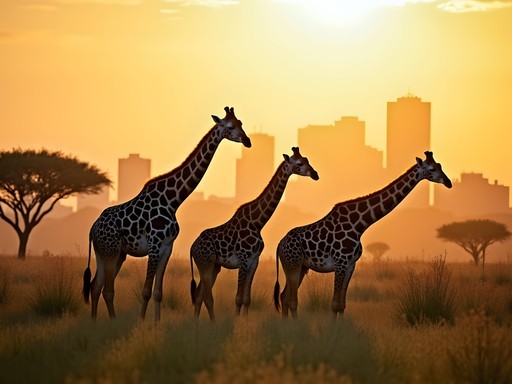
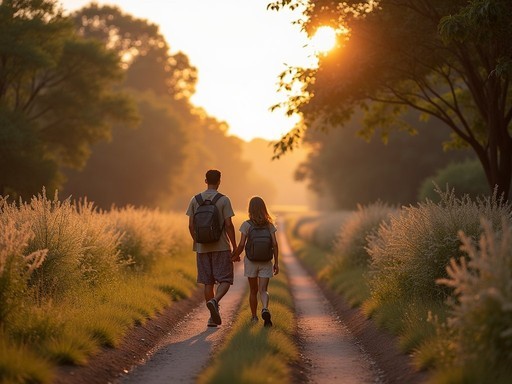





Comments
Timothy Jenkins
Excellent guide, Mason. Having spent three months in Nairobi last year, I'd add that the boda bodas (motorcycle taxis) are worth mentioning - they're fast for bypassing traffic but definitely not for the faint-hearted! For longer stays, the Nairobi transit card (My1963) can save time and hassle on matatus, though it's not accepted everywhere yet. Also, for anyone visiting Nairobi National Park, hiring a driver for the day is more practical than trying to navigate public transport to get there. The park entrance is quite remote.
islandphotographer7225
Love that shot of the sunrise over Uhuru Park with all the morning joggers! Perfect timing capturing that matatu zooming by in the background. What camera do you use?
oceanninja
Those matatu photos are epic! The artwork is incredible.
backpackqueen
This is super helpful! I'm heading to Nairobi next month for the first time. How safe is it to walk around areas like Westlands or Kilimani during the day? Any areas I should definitely avoid?
Timothy Jenkins
Westlands and Kilimani are generally fine during daylight hours - I've walked both extensively. Stay aware of your surroundings and keep valuables secure. Areas to be more cautious include parts of Eastlands and walking anywhere after dark. When in doubt, Uber is affordable and worth the peace of mind.
backpackqueen
Thanks Timothy! That's reassuring. I'll stick to rideshares after sunset.
Jose McDonald
Awesome guide, Mason! I was in Nairobi last month and totally agree about the rideshare apps being a game-changer. Uber and Bolt were my go-tos, especially at night. One tip I'd add - always confirm your driver's name and car details before getting in, and share your trip with someone. I found drivers were super friendly and often gave great local recommendations. The traffic is INSANE though - once took me almost 2 hours to go 8km during rush hour! Worth mentioning that having a good offline map is essential since data can be spotty. Maps.me app saved me multiple times when I was trying to navigate on foot!
wildseeker
Those matatus are something else! Rode one from Westlands to the city center last year and it was the most chaotic but somehow efficient transportation I've ever experienced. The music was blasting and the conductor was hanging out the door collecting fares. Definitely an adventure but I'd do it again in a heartbeat. Mason, did you have a favorite matatu route?
Timothy Jenkins
Matatus are definitely an experience! I found route 125 to be quite reliable when I was there researching for my blog. The key is finding one that's not too overcrowded, which is easier said than done during rush hour.
wildseeker
Thanks for the tip Timothy! Will try route 125 next time. The overcrowding is real though!
Douglas Bradley
Mason, this is an excellent breakdown of Nairobi's transport ecosystem. I've visited three times now for my cultural documentation projects, and your assessment of the matatu culture is particularly astute. One thing I'd emphasize for first-timers is the importance of being aware of rush hour timing - between 7-9am and 5-7pm, traffic congestion reaches almost mythical proportions, especially along Mombasa Road and Thika Highway. I've found that combining transport modes works best: Uber/Bolt for longer journeys or after dark, matatus for experiencing local culture during off-peak hours, and walking for neighborhood exploration (Westlands has some fascinating architectural contrasts). The boda bodas (motorcycle taxis) are certainly efficient for beating traffic but require a higher risk tolerance than some visitors might have. For anyone staying more than a few days, I recommend learning a few basic Swahili phrases - matatu conductors appreciate the effort and it can make the whole experience more rewarding.
coffeevibes
First time going to Africa and this is so helpful! Is it worth getting a local SIM card for maps/rideshare apps or does wifi work well enough? Nervous about the whole transportation situation!
Oliver Duncan
Definitely get a local SIM! Safaricom has booths right at the airport. Cost me about $10 for enough data for two weeks. You'll want it for rideshare apps and navigation. Don't be nervous - Nairobi is more modern than many expect!
coffeevibes
Thank you! That's really reassuring. Will definitely grab a SIM at the airport then!
beachclimber
Thanks for the matatu tips! Those colorful buses in your photos look amazing!
sunnyzone
The walking section is helpful but I'm still not clear which neighborhoods are best for exploring on foot? Any specific recommendations?
hikingchamp
Westlands and Kilimani are pretty walkable during the day! Also Karen if you're visiting the Giraffe Centre area.
Venture X
Premium card with 2X miles, $300 travel credit, Priority Pass